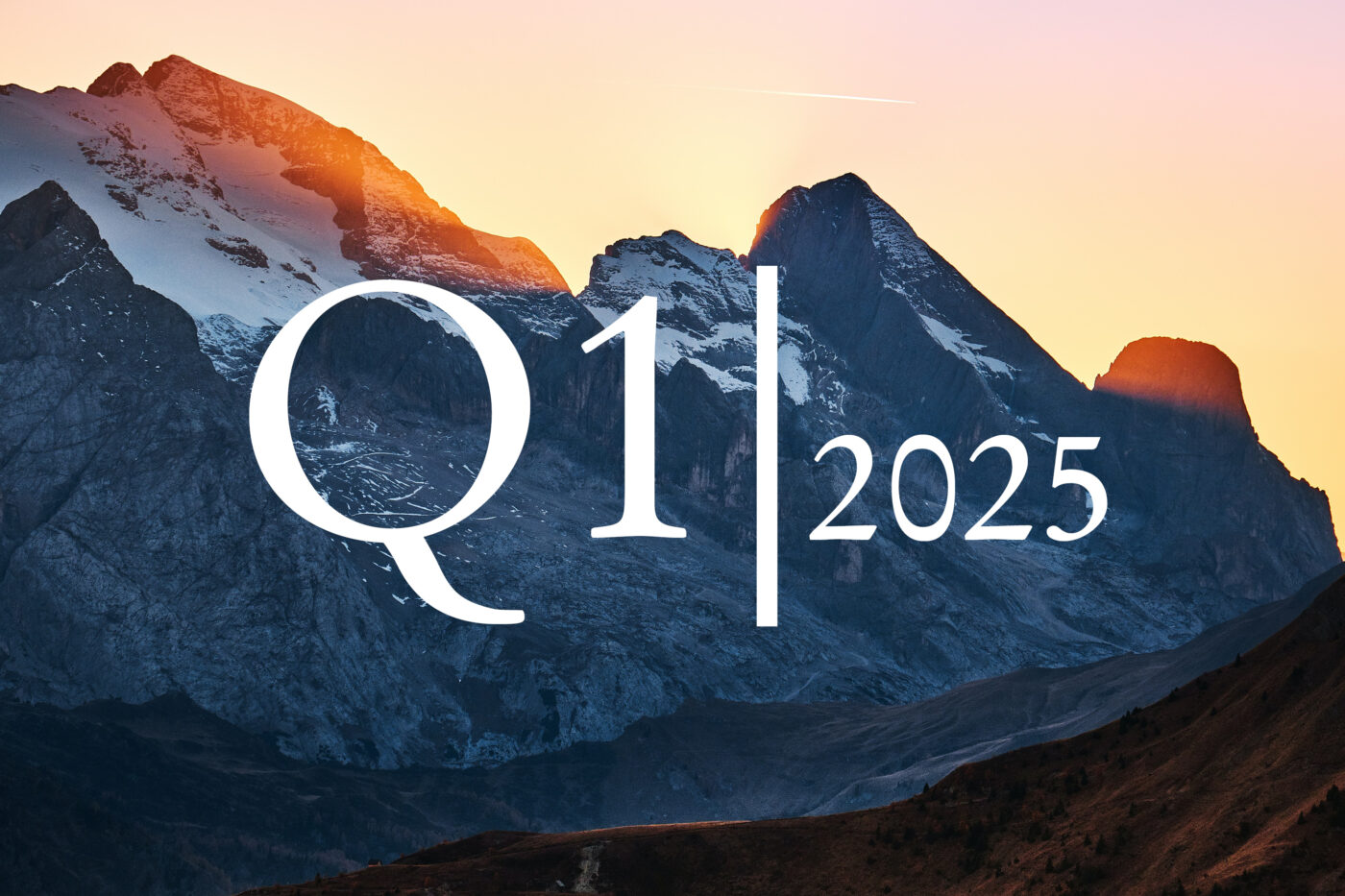In a nutshell
US Treasuries and UK Gilts in the lead for government bonds with high credit ratings in local currency - Bonds not the first choice.
In the European corporate bonds, we favour the investment grade segment and avoid cyclicals.
In the emerging markets, we see potential in the local currency segment in particular.
The good times are not over
The disinflationary trend over roughly the past year and the recent decision by the major central banks not to continue tightening their interest rate policies have recently given bond markets a good boost. This does not mean that weaker times have to follow now. On the contrary: we also see several opportunities to generate positive returns with fixed-interest bonds in 2024. What are these in detail and which segments are we avoiding?
Safe government bonds: Outlook continues to offer opportunities
The fact that government bonds with high credit ratings will end 2023 with a positive final quarter is likely to be groundbreaking for the next twelve months, at least for the Anglo-Saxon region in the respective local currency. While we are more cautious than the consensus estimate with regard to the further development of yields in the ten-year maturity segment for both US Treasuries and UK Gilts, even if yields rise slightly, the current interest rate will be sufficient to generate positive returns overall. German Bunds, on the other hand, face stronger headwinds due to their lower base rate. However, across all three currency areas, our expectation that the central banks will utilise monetary policy leeway and lower their key interest rates over the course of the year as inflation continues to fall gives support. The US Fed and the Bank of England are likely to take a more dynamic approach than the European Central Bank.
Selective government bonds with a positive outlook for 2024
Past and expected performance of 10-year government bonds, overall effect of yield/price change, coupon yield and roll-down effect
Forecasts: Key interest rates and government bond yields (in %)
Berenberg and consensus forecast in comparison, values at mid-year 2024 and year-end 2024
Corporate bonds: Economic risks not priced in
Corporate bonds completely ignored economic risks in the past year. Riskier European high-yield bonds even performed significantly better (+9.9%) than the more defensive investment grade segment (+6.1%). Both segments benefited from significantly falling risk premiums (left chart, p. 11) and thus offered protection against rising risk-free interest rates. However, cracks are increasingly appearing in the economy and corporate results, and issuers with weak quarterly results are now being penalised by the market. In addition, part of the restrictive monetary policy is not yet fully reflected in weaker economic data. This could increasingly weigh on companies in the future. Although we consider the valuation of investment-grade corporate bonds to be fair in a long-term context, the economic risks are hardly priced into the risk premiums in the high-yield segment. As a result, these could rise disproportionately, particularly in the case of weaker credit ratings. We therefore favour the more defensive investment grade segment over high yield, also due to the predominantly solid balance sheets and sufficient liquidity reserves. In view of convincing quarterly results and attractive valuations, we are also maintaining our overweighting of financial bonds, while avoiding cyclical sectors. It is also worth taking a broader view. The addition of defensive covered bonds increases the stability and credit quality of the portfolio.
Corporate bonds: 2023 will not be repeated
In 2023, the risk premiums on high-yield bonds narrowed more than in the investment grade segment - this should not happen again in 2024
Emerging markets: Local currency bonds more attractive than ever
Emerging market bonds in the hard currency segment once again proved their resilience during the significant rise in US interest rates. Their risk premiums are currently close to their lows for the year, which is remarkable given the net outflow from this segment. With an increase in value of around 9% since the beginning of the year, the influencing factors on the local currency side are different. This segment is benefiting from high current interest rates and the fact that some central banks in the emerging markets have already initiated the first interest rate cuts. In fact, the central banks in many developing countries have acted more decisively in this cycle than their counterparts in the industrialised nations. In some cases, some countries began raising interest rates as early as mid-2021, while the US Fed did not initiate its interest rate turnaround until March 2022. The head start also meant that the emerging markets raised their interest rates to a higher level overall and left them there for longer. This now puts them in a position to cut rates again earlier (see figure below right). In tandem with the significant interest rate hikes, inflation in the emerging markets has fallen in exemplary fashion, giving central banks additional room to cut interest rates. However, the "higher for longer" narrative until October 2023 has so far prevented this option from being priced into the emerging market curves. In terms of valuation, there is, therefore, an attractive entry opportunity. In the local markets, we are focussing on countries that are in an early phase of the interest rate cycle, such as Brazil and Mexico. In the hard currency segment, on the other hand, we favour long-term bonds from issuers of good quality. In addition, we expect a supply shortage in the future, which should further support the positive outlook.
Emerging markets: central banks support local currency securities
Emerging market banks initiated their interest rate hikes much earlier than the US Fed - and have already started to cut rates accordingly
Conclusion: All the segments discussed offer good opportunities
In contrast to the previous year, safe government bonds should be attractive in the coming twelve months, particularly in the respective local currency outside the eurozone. We favour European corporate bonds in the investment grade segment, overweighting financial securities and avoiding cyclical exposure. Covered bonds also increase stability and credit quality. Finally, local currency bonds are to be favoured in the emerging markets – they benefit from resolute central banks that are already making their first interest rate cuts.
Authors

Martin Mayer
Martin Mayer, CEFA, has been working as a portfolio manager since 1998. Since November 2009, as Senior Portfolio Manager at Berenberg, he has been responsible for the pension strategy of private asset management and for individual special mandates. After completing his training in business administration (Wirtschaftsakademie) and his degree in economics (University of Hamburg), he joined Deutsche Bank's asset management department in 1998. Until 2008, he managed individual client portfolios for Private Wealth Management and completed further training as a CEFA investment analyst/DVFA in 2001/2002. Mayer joined HSH Nordbank in the summer of 2008 as Deputy Head of Portfolio Management.

Felix Stern
Felix Stern joined the Asset Management division of Berenberg in 2000 as a fixed income portfolio manager. Currently he is heading the fixed income selection team within the Asset Management and is responsible for institutional mandates. As a senior portfolio manager he is responsible for the selection of corporate and financial bonds as well as short-term bond market investments. He is also the lead manager for several of Berenbergs institutional mutual funds. Prior to joining Berenberg, he worked several years for the Market Research department of British American Tobacco, Germany. Felix is a CCrA - Certified Credit Analyst (DVFA) and also has a German Diploma in business economics from the Fernuniversität in Hagen.

Wei Lon Sung
Wei Lon Sung has worked in fixed income portfolio management at Deka Investment since 2018, with a focus on emerging markets. He joined Berenberg in 2023 and contributes his expertise in the fundamental selection of emerging market bonds in local and hard currencies. He holds a Bachelor and Master of Science in Mathematics from Goethe University Frankfurt.



